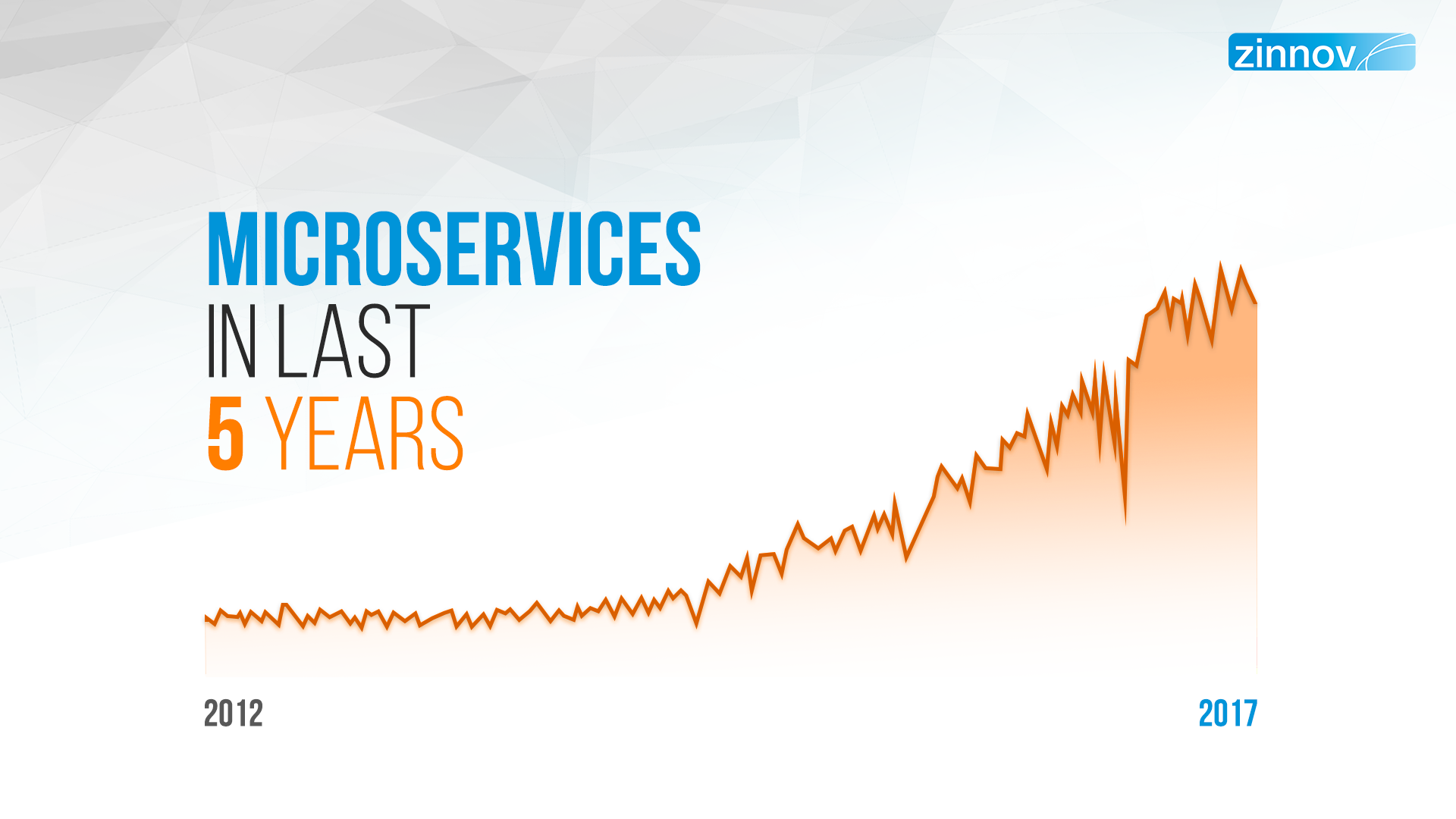|
|
by Siddharth Jhawar – Consultant

The advent of cloud-based services has changed the landscape of the software industry. It has improved efficiency by bringing flexibility, agility, and modularity into both businesses and technical processes alike. Often, this is compared with historical breakthroughs like the invention of the steam engine, electricity, electric bulb, transistors, etc. And why not? Numbers speak for themselves. CISCO Global Cloud Index forecasts that 92% of the total workloads¹ will be processed in cloud data centers by 2020. It estimated that overall cloud workloads will grow at 26% over 2015-20, predominantly driven by growth in the public cloud (35%). Private cloud will see a slower growth of 15%. Accordingly, the share of public cloud data centers will increase from 49% (2015) to 68% (2020).
The success of cloud-based services has spurred the growth of microservices as well. Microservices is a distinctive method of developing software systems as a suite of small and independent modular services, each such service running as a unique process and communicating through a well-defined lightweight mechanism to serve its business goal.
Why Microservices Will Matter.
Distinct parallels can be drawn between the level of microservices and cloud-based services. Both enhance collaboration, communication, accessibility, and security of a solution or product. Logically, the proliferation of cloud-based services is a positive indicator for the future of microservices as well.
The Proof is in the Numbers.

The figure illustrates the growing adoption and popularity of microservices over the last 5 years, as shown by Google Trends [08/2012-08/2017]
The Origin Story of Microservices & APIs
Previously, traditional monolith designs were used to develop software applications as a single unit. Although it was a well-accepted method to develop smaller projects, the problems arose when there were large projects, or companies were attempting to scale already existing smaller projects. Developers needed to have a holistic understanding of the project to make any updates or changes in the system. The advent of Service Oriented Architecture (SOA) overcame this limitation; SOA is a method of developing software applications that fragments the entire solution into discrete components, and Microservices are nothing but the implementation of SOA.
Microservices ease the process of sharing data and services, thereby breaking information silos that can hinder productivity. It brings modularity into the system by segmenting the product and/or solutions into smaller, logical components. The segmented data and functionalities are often exposed through APIs, thus making APIs an embedded part of microservices. This concept was developed to share services and data within the organization, but companies like SalesForce, eBay have started to monetize their data and functionalities by exposing APIs for outside consumption. A few companies, such as Stripe, Shippo, etc. have formed their entire business strategy around delivering their core products or solutions through APIs.
Verticals Where APIs are King.
Although firms across verticals are increasingly using APIs in their systems, a few verticals have witnessed higher growth than others. The following graph illustrates APIs in key verticals which constitute around half of the total listed APIs on the ProgrammableWeb.
The figure indicates the dominance of APIs in top verticals over the last 8 years [2008-2016]. Data source: ProgrammableWeb
Irrespective of differential usage pattern across industries, firms are leveraging APIs to capture business opportunities in untapped markets. Stripe, an innovative API-focused organization, provides unified APIs and tools to manage payments. Twilio provides cloud communication APIs to integrate messaging, voice, and video in software applications. Plaid helps in connecting financial services applications to user bank accounts. But these observations are not limited to communication and commerce industries.
Location-based services industries have been early adopters of APIs and seen some success; however, recently, Learning management systems (LMS), security, and travel have seen the highest traction in the usage of APIs in recent times.
What Separates API-focused Firms From The Pack?
The operational fundamentals of API-focused firms vary significantly as compared to traditional software firms. API-focused companies tend to be more agile, have flat organization structures, and typically have a culture similar to that of a startup. Since APIs are used to scale businesses rapidly, organizations using an API-led strategy should carefully craft their business goals to maximize returns.
The Levers of Growth
The story of cloud services suggests that the industry is progressively shifting towards cross-integrated solutions. The positive part is that the role of APIs and API-focused firms will only increase from here. However, the pace at which we see the growth will primarily depend on a multitude of variables such as:
Previously, we had seen the success of vendorization in the hardware industry. A lot of companies had used organized vendor channels to develop innovative products. This didn’t just have a positive impact on product launch time and price, but also helped them to focus on solving the concerned problem.
Similarly, Microservices are directly impacting collaboration and innovation across the software industry. Sharing of existing functionalities reduces inefficiency and unnecessary reinvention, helping firms to focus on more real and pressing problems. However, the success of Microservices is highly dependent on the sustenance of a homogenized ecosystem. Given the complexity of the moving parts, the questions that remain to be answered over time include – Will industries be able to capture its potential business value? Which industry will see higher adoption? Will we see more API-focused firms in the future? Or will this be another stepping block to a new technology?
Workload¹ – A workload is considered an equivalent to a virtual machine or a container.
Vignesh Balagopalakrishnan and Satyam Jain have contributed to this article.